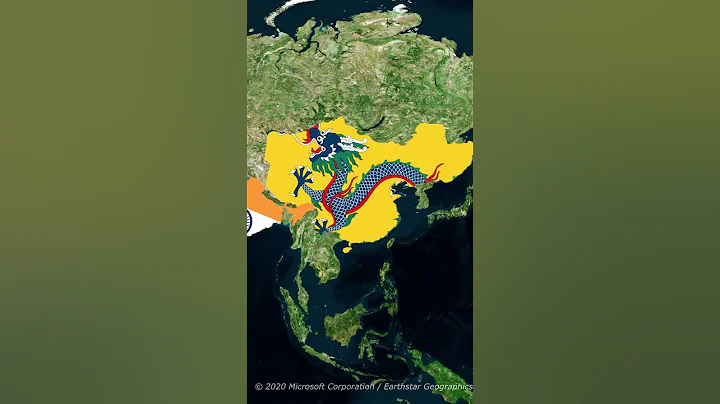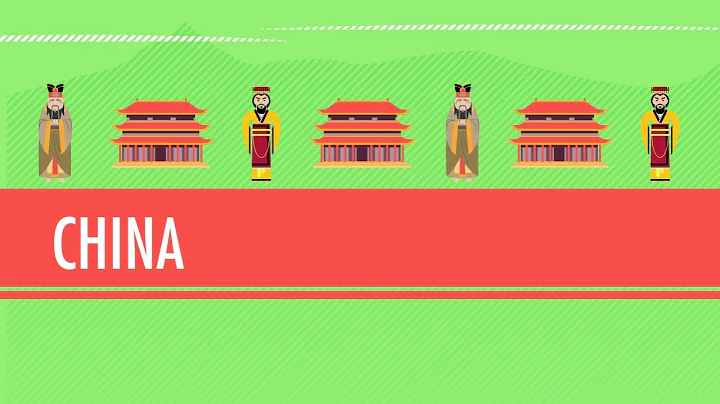As we all know, After the Qing Dynasty entered the customs, many systems followed the traditions of other dynasties in the past. Such as six ministers, nine ministers, cabinet ministers, etc. But the Ministry of Internal Affairs was an institution unique to the Qing Dynasty. So what exactly did the Ministry of Internal Affairs of the Qing Dynasty do? How much power does the Home Office have? The interesting history editor below will bring you detailed answers.
In the daily affairs of the Ministry of the Interior, it manages daily chores and etiquette such as royal property and food. If the six ministries and the cabinet are the outer dynasty and are in charge of national affairs, then the Ministry of Interior is the "inner dynasty" and specializes in handling the emperor's family affairs.
Although the Ministry of Internal Affairs only handles the emperor's family affairs, its complexity is far beyond that of other agencies. Because in the Ministry of Interior, there are a large number of painting committee members. Baoyi used to be a domestic slave of the Eight Banners nobles and was in charge of all royal affairs.

In addition, the Ministry of Internal Affairs and Communications handles a wide range of matters. According to the Records of the Qing Dynasty: "Officials, households, rituals, soldiers, punishments, and services are all in the hands of the government." In other words, the affairs handled by the Ministry of Interior include personnel, money, etiquette, military industry, punishment, engineering, etc.
There are more than 50 subordinate agencies of the Ministry of Interior, and the number of officials established is twice that of foreign officials, up to more than 3,000 people. Among the officials established by the Ministry of Interior, the highest-ranking one is the head of the Ministry of Interior. He is a second-level official in the Ministry of Interior and is in charge of all matters.
Under the Secretary for Home Affairs, there are court officials, clerks, and principals. Mainly assists the head of the Ministry of Interior in handling large and small matters. Although the Ministry of Internal Affairs is clearly divided into more than 50 agencies, it is very complex internally.
According to customization, the Ministry of Internal Affairs should be divided into civilian agencies and military agencies. These institutions have different purposes. For example, the Jingshi Room is the eunuch organization. The imperial bird gun was for the emperor to take care of the bird gun.
In the Qing Dynasty, apart from the army equipped with shotguns, only the emperor could use them. The Imperial Book Company specialized in printing and reproducing the emperor's poetry and handwriting. These are private institutions.
As for Sanqi Military Camp, Hu Military Camp, Qianfeng Military Camp, etc., they belong to military organizations. However, the distinction between civilian and military positions among official positions in these institutions is not so clear and easy.
For example, in the Qing Dynasty Huidian revised by Qianlong, Shang Siyuan was the head of the stable, and Si Gong and Siya of the military academy were civil servants. However, in the "Qing Huidian" revised during the Jiaqing period, it was changed to a military position.
This vague situation without specific boundaries directly caused confusion in the Ministry of the Interior. Moreover, the Ministry of Internal Affairs was also more responsible for the selection of official positions. In the Qing Dynasty, ministers from outside the court were divided into nine grades, and each grade was further divided into two grades: Zheng and Cong.
For officials in the Ministry of Internal Affairs, in addition to their rank, they also distinguish whether they have a higher position or not. In terms of selection, foreign officials are mainly selected from the imperial examination. Of course, there will also be some official positions obtained through the secret seal of the fathers, or positions bought with money.
Generally speaking, there are still fixed rules for the selection of foreign officials. However, since the Ministry of Internal Affairs handles royal affairs, its officials are often appointed by the emperor himself or selected by the family based on their status. Some official positions are even hereditary for a long time.
Of course, no matter how chaotic the Ministry of the Interior is, it cannot affect the royal family’s services. Among the many services, the most important one is to earn more silver for the royal family. During the Qing Dynasty, the Ministry of Internal Affairs always had many sources of income. There are not only tributes from local officials, but also imperial mansions and official residences set up in various places, which can be used to collect land rent. This income is very high.
During the Qianlong period, Huangzhuang under the jurisdiction of the Ministry of Internal Affairs amounted to 1.859 million acres. The largest landowner in the country was actually the emperor himself. Relying on these rents, the annual income can reach 150,000 taels.

In addition to landowners, the Ministry of the Interior can also levy various taxes. For example, salt tax is an important revenue. In the past, salt was monopolized by the imperial court, and the imperial court could levy large amounts of taxes regardless of whether salt was produced or produced.
Taking the thirty-fifth year of Qianlong's reign as an example, the Ministry of Internal Affairs only levied a salt tax of 500,000 taels of silver in the Huaihe River . Relying on the sales of ginseng, mink , and the retribution of merchants from all over the country, the Ministry of the Interior has obtained huge funds from multiple sources of income.
During the Shunzhi and Kangxi years, the Ministry of Internal Affairs still had to request hundreds of thousands of taels of silver from the Ministry of Internal Affairs every year to satisfy the royal family. But during the Qianlong period, the revenue of the Ministry of Internal Affairs increased significantly. The Ministry of Internal Affairs and Communications alone has savings of more than 2 million taels.
The sufficient income of the Ministry of Interior will, to a certain extent, lead to the accumulation of private wealth in the hands of the royal family, but it can also reduce the burden on the family. But in the late Qing Dynasty, the revenue of the Ministry of Internal Affairs dropped sharply, and it still had to rely on funds from the Ministry of Internal Affairs.
The Ministry of Internal Affairs followed the painting system of the Eight Banners nobles, and its establishment was also related to the Qing Dynasty's situation outside the customs at that time. After Huang Taiji ascended the throne, he was determined to take power into his own hands. In order to achieve this goal, simply proclaiming himself emperor requires more than that. Instead, he wanted to take a series of powers into his own hands.
One of them is the power to assign properties. Before Huang Taiji, the power of the Eight Banners to distribute property belonged to the owners of the Eight Banners. They need to send troops together and share the losses. After returning from the war, the wealth was selected by the Eight Banners nobles and then distributed to the soldiers below.
On the other hand, Huang Taiji took advantage of the establishment of the Internal Affairs Council to control this power in his own hands. This approach helped the emperor concentrate more power in his own hands. After the Qing Dynasty entered the customs, it also followed the system of the past and Ming Dynasty . But during the Kangxi period, the Ministry of Internal Affairs was restored.

It can be seen that the Ministry of Internal Affairs has a better system than the Ming Dynasty. If the Qing emperor did not have a Ministry of Internal Affairs, the royal family’s financial expenditures would basically depend on the Ministry of Internal Affairs. Although the Minister of Internal Affairs also had to act according to the emperor's orders, he was not as obedient as the "mantle" of the Ministry of Internal Affairs.





















